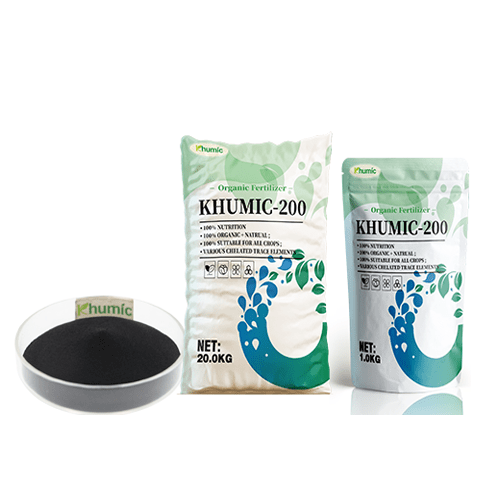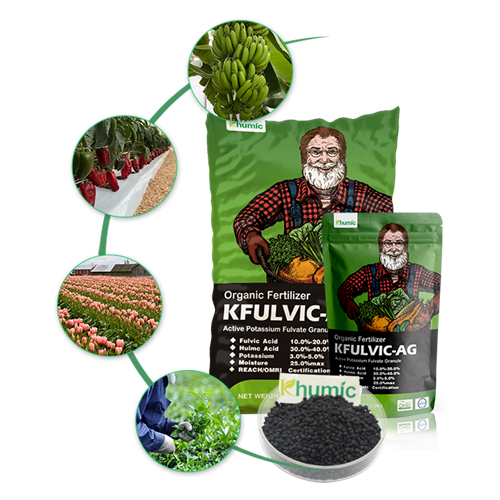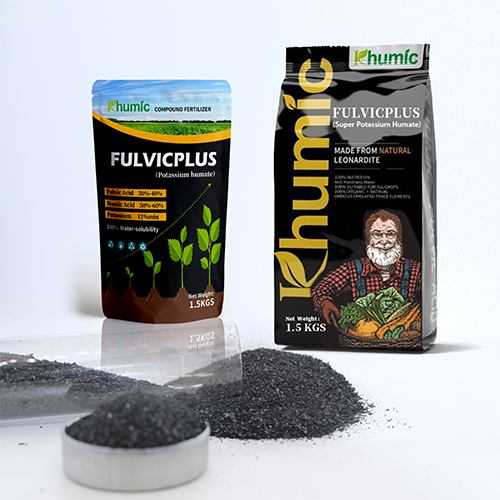Introduction
In the field of organic fertilizers, terms often used for various organic materials include humates, humic substances, humic acid, fulvic acid, humins, and humus. Among them, humic acid and fulvic acid often confuse many people due to their similar names and properties. However, the two compounds have different properties and play different roles in different applications.
What is Humic Acid
Humic acid (HA) is a humus with a macromolecular structure, derived from decayed organic matter, and is commonly found in soil, peat, coal, and water bodies. Humic acid is mainly composed of carbon chains and carbon rings. In addition to carbon, it also contains oxygen, nitrogen, hydrogen, and phosphorus. Their darker color and high molecular weight help improve soil structure and fertility.
Humic acid is almost insoluble in water but completely soluble in alkaline solutions but will precipitate at pH values below 2. Humic acids work best in soil, where they act as chelators to release and bind nutrients, preventing minerals from being locked up in the soil and leaving nutrients usable for plants to absorb. In addition, it stimulates root and shoots growth and promotes microbial activity in the soil.
What is Fulvic Acid
Fulvic acid (FA) is a soluble organic compound produced by microorganisms in soil decomposing organic matter. They are similar to humic acids but have different carbon and oxygen contents and a smaller molecular weight. It has a light yellow or brown color, is soluble in all pH values (acidic and alkaline), and is more reactive than humic acid because it contains almost twice as much oxygen.
Fulvic acid is the most effective organic chelating compound and plays a vital role in plant nutrient absorption and transport. It can be used via foliar application due to its small molecular size and electrical charge that plants can immediately absorb, allowing it to penetrate tough cell walls and mitochondria better. At the same time, a large amount of iron can be brought into the soil solution to reduce chlorosis in high-pH soil.
Humic Acid Benefits and Uses
Humic acid promotes soil fertility by enhancing nutrient retention, improving soil structure, and promoting microbial activity, preventing mineral retention in the soil. Acts as a natural chelating agent, attaching and binding micronutrients, making them more readily available to plants and preventing plant nutrient deficiencies.
Humic acid can also fix nitrogen, prevent iron oxidation, and improve plants’ absorption rate of magnesium, calcium, zinc, and manganese. Can be used at all stages of plant growth (from seed to harvest) and on any type of plant. Nitrogen is one of the most deficient nutrients in plants, and iron is essential for plants to produce chlorophyll. When iron is oxidized, plants can no longer use it for energy production.

Fulvic Acid Benefits and Uses
Fulvic acid plays a vital role in stimulating root development. It chelates minerals and trace elements, allowing them to enter plant roots more easily. Enhance plant metabolism, improve water and nutrient absorption efficiency, enhance fertilizer efficacy, promote the decomposition of organic matter in the soil, and improve plants’ adaptability to environmental stress.
Because fulvic acid molecules can pass through the hard cell walls and membranes and enter the leaves. It is often used as a foliar spray, but it can also be applied by mixing it with other nutrients into a regular irrigation system.
The results are even better when combined with fertilizers such as seaweed extract. Both fertilizers contain hormones that stimulate plant growth, including cytokinins and auxins. They help cells divide and enlarge, increasing the rate of plant growth.
Conclusion
In conclusion, while humic acid and fulvic acid belong to the same family of organic compounds, they serve distinct purposes in soil health and plant nutrition. Humic acid focuses on soil fertility and structure, while fulvic acid plays a crucial role in nutrient uptake and plant metabolism.
FAQ
Can humic acid and fulvic acid be used together in agriculture?
Yes, combining humic acid and fulvic acid can provide synergistic benefits by improving soil health and nutrient availability for plants. In particular, both fulvic minerals and humic acids are necessary when growing in a hydroponic system.
Are humic acid and fulvic acid safe for the environment?
Both humic acid and fulvic acid are natural organic compounds that are environmentally friendly and do not pose any harm to the ecosystem when used responsibly.
How do humic acid and fulvic acid affect soil pH?
Humic acid and fulvic acid can help buffer soil pH and maintain it within an optimal range for plant growth by improving cation exchange capacity.
Recommended related articles:




